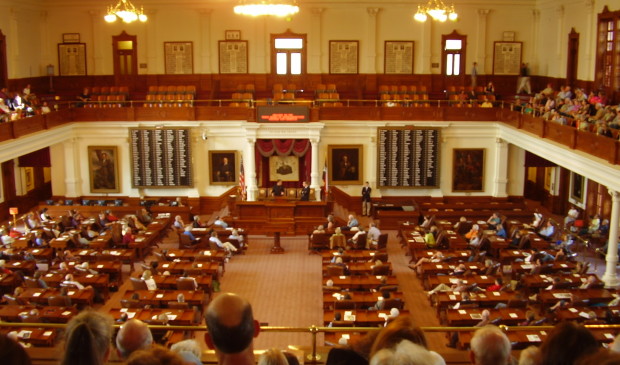CTRMA hears mixed legislative review
Tuesday, July 28, 2015 by
Courtney Griffin Mike Heiligenstein, the executive director of the Central Texas Regional Mobility Authority, told CTRMA board members at their most recent meeting that staff met a great deal with state representatives during the recent 84th legislative session – and they think it paid off.
Jerry Valdez, a lobbyist who worked with CTRMA, said it was the most active legislative session involving tolling authorities and regional mobility authorities.
“There were legislators that were filing legislation on (regional mobility authorities) that didn’t even have RMAs in their district,” said Valdez.
Now that the fight has died down and all bills are signed into law, CTRMA board members were briefed about new transportation legislation that will begin to go into effect.
Brian Cassidy, CTRMA’s outside legal counsel who also helped at the Capitol, said there were several key legislative changes that have reshaped the landscape around transportation funding. Unfortunately, some legislation that allocates new funding cannot be accessed by state tolling authorities. It’s becoming a trend for lawmakers to rope regional mobility authorities out of new financing, Cassidy said.
The 84th session’s Senate Joint Resolution 5 is one of the largest allocations that excludes new toll road funding. SJR 5 would add billions for additional nontolled state highway transportation projects if voters approve a constitutional amendment in November. If the amendment is approved, SJR 5 will allocate a portion of the state sales tax (about $2.5 billion in 2018) and 35 percent of Texas’ motor vehicle tax (about $5 billion in 2020) to the Texas Department of Transportation’s bottom line.
Cassidy said that although SJR 5 would make less money available to CTRMA projects in the long term, there would be a bigger pool of cash available for other transportation projects. In addition, regional mobility authorities might still gain access to funds for projects in which free lanes are built in conjunction with tolled lanes.
“It’s going to be a policy that TxDOT has already started tackling. … For example, with (other CTRMA projects, they’re asking), ‘What money is going to be available to be used for that, or not be used for that,'” Cassidy said at the July 1 board meeting.
Heiligenstein suggested that staff needed to start engaging TxDOT in the general rule-making process that occurs after laws are passed, since many future CTRMA road projects have both free lanes and tolled lanes.
“I think that’s also pretty important from a standpoint of where we are trying to head on our new express lanes,” added CTRMA Vice Chair Jim Mills, referring to MoPac South tollway fare exclusions. “Because we are going to discount (public transportation) tolls.”
Still, legislation causing CTRMA to potentially lose billions in future funding was offset by a more than half-a-million-dollar gain.
Cassidy said passage of House Bill 20 succeeded in ending TxDOT’s large, annual “diversion” funding this session. TxDOT has annually contributed about $600 million in TxDOT highway funds to the Department of Public Safety for operational costs. The $600 million will be placed back in TxDOT’s pocket in fiscal year 2016.
Yet CTRMA’s 84th legislative summary might be known more for its defense than the RMA-specific laws staff was able to help pass.
Some of the failed proposals included eliminating RMAs entirely, combining them into local government, selecting RMAs via a balloting process, eliminating tolls entirely and scrutinizing RMAs “in every form and fashion,” Valdez said.
Cassidy and Valdez added that they will continue to engage the Texas Transportation Commission’s rule-making process currently underway after HB 20’s passage in the legislative interim year. CTRMA is interested in HB 20 because it seeks to create a road project prioritization process for TxDOT, along with other measures.
“TexasHouseofRepresentativesChamber.” Licensed under Public Domain via Wikimedia Commons.
You're a community leader
And we’re honored you look to us for serious, in-depth news. You know a strong community needs local and dedicated watchdog reporting. We’re here for you and that won’t change. Now will you take the powerful next step and support our nonprofit news organization?








